- 16 Dec 2022
- 4 Minutes To Read
- Print
- DarkLight
- PDF
Creating a New Loan
- Updated On 16 Dec 2022
- 4 Minutes To Read
- Print
- DarkLight
- PDF
Every loan account you create in Mambu is an instance of a loan product that has been created before. So, the terms that were set for the product will determine the terms and conditions for the new loan accounts.
This allows you to keep all your accounts organised by the products they belong to. Thus you'll be able to compare the performance of your organization's products in the Reporting section in Mambu.
Therefore, before you create a loan account, make sure you have already set up loan products.
There are different ways of creating a new loan account in Mambu. You can either:
- Go to the top bar and select Create > Loan Account > enter all the account's details > select Create Account.

- Select New Account > New Loan Account on the right-hand side of the client's profile > enter all the account's details > select Create Account.

- Create a loan account via the API. For more information, see our API Reference
Account terms
The loan amount and interest rate are automatically populated with the default values defined at the product level. You can leave them as they are or change the values but make sure they are within the defined constraints of the product. Enter the repayment frequency, the arrears tolerance period, and the arrears tolerance amount of your account.
Disbursement details
In this section, select the channel of the disbursement, the anticipated disbursement date, and the first repayment date of the loan.
Offset of the first installment due date
When you create a new loan, Mambu automatically sets the first repayment date after one repayment interval, meaning after 1 month, 2 weeks, and so on, from the disbursement date. In addition to this interval you can also have a default offset to the first installment due date.
The offset limits are set at the product level and the validation will be done when you set the first repayment date either when creating the account or when disbursing it.
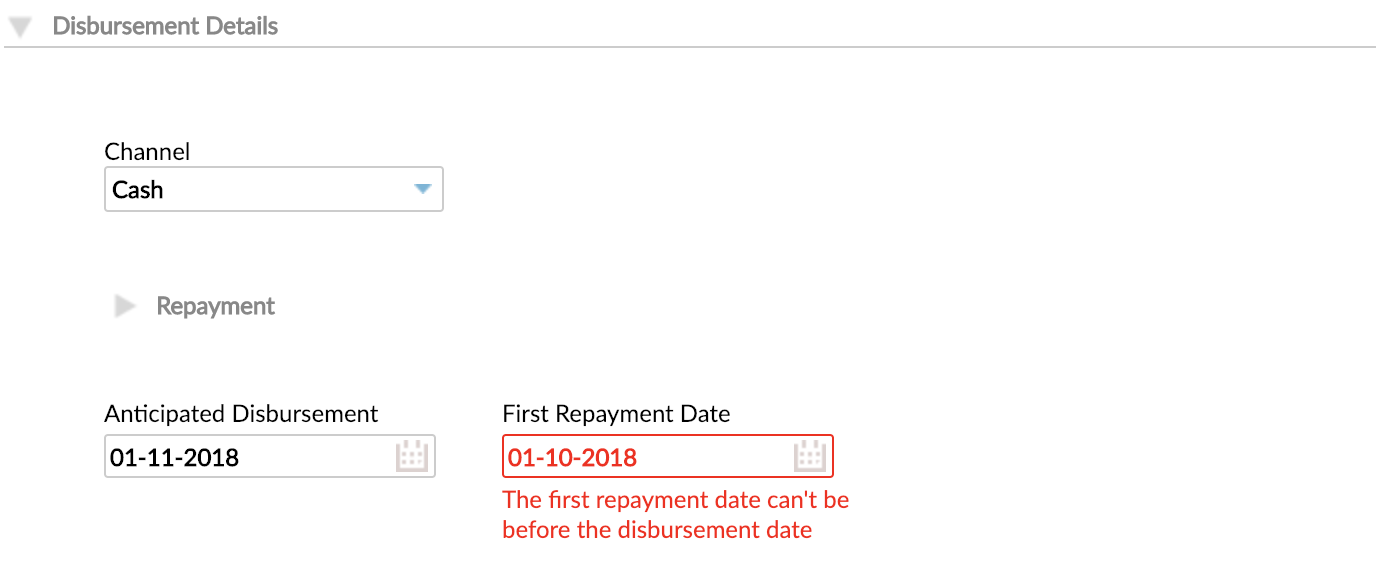
Example
A loan with monthly repayments has an anticipated disbursement date on December 1, 2019.
- Regular first repayment date, without a default offset: January 1, 2020.
- With a 10 days default offset, Mambu will add 10 days to the regular first repayment date: January 11, 2020.
- If the product has a minimum offset of 2 days, the first repayment date will have to be on or after January 3, 2020 (Image above).
- If the product has a maximum offset of 20 days, the first repayment date can't be after January 21, 2020.
Based on the account terms and anticipated dates, you can finally preview the schedule with the detailed repayments divided in principal and interest, total amounts due and how the balance evolves over the loan duration.
Planned fees
Planned fees are manual fees that can be set up in advance and added to the due date of future installments of all product types except for Revolving Credit. First you must define planned fees at the product level, then you can configure all the fees you wish to apply at the account level, in the Planned Fees section of the Creating a new loan form.
To add the fees, simply enter the fee amount in the appropriate cell, then select Apply to selected installments.
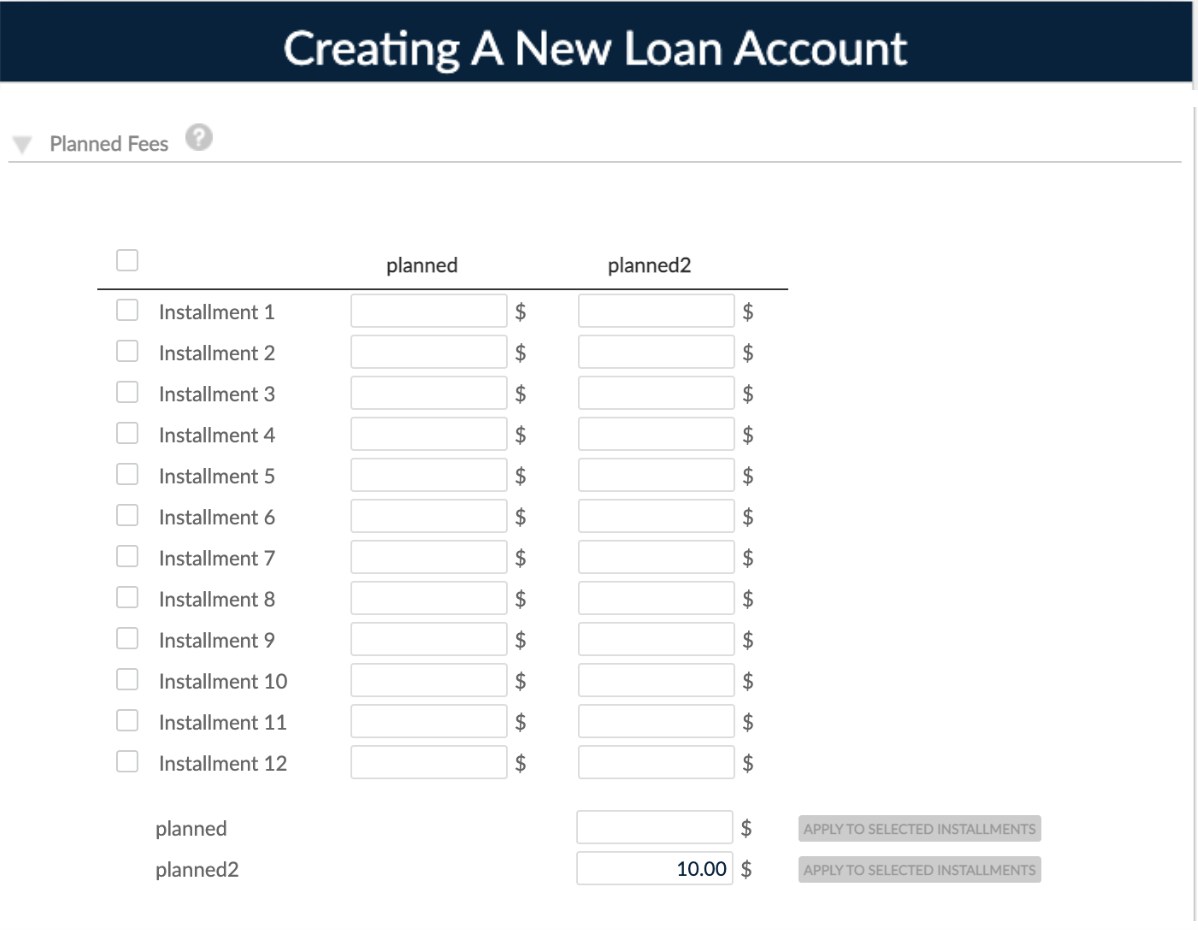
Loans with tranched disbursements
When you create a new loan account using a product that accepts disbursement in multiple tranches, the amounts that are expected to be disbursed in each tranche must be specified in the Tranches section, with an expected disbursement date for each tranche.
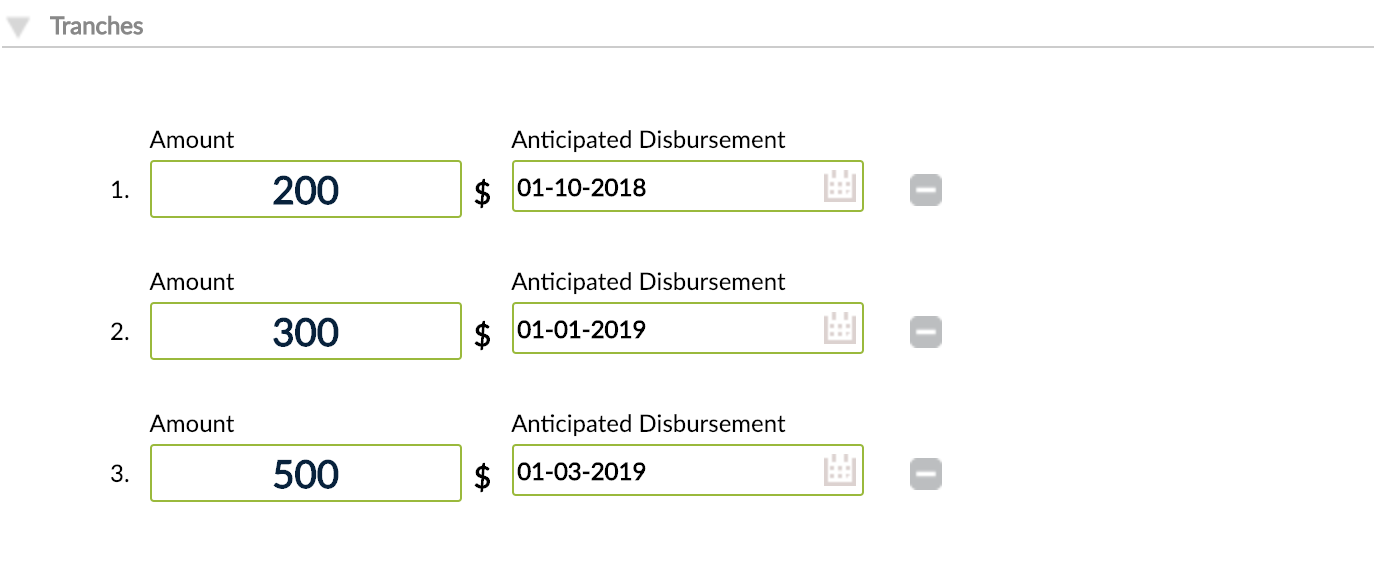
The repayment schedule calculated for a loan account with multiple disbursements will include the additional tranches as defined above, assuming that they will be released on the anticipated disbursement date:
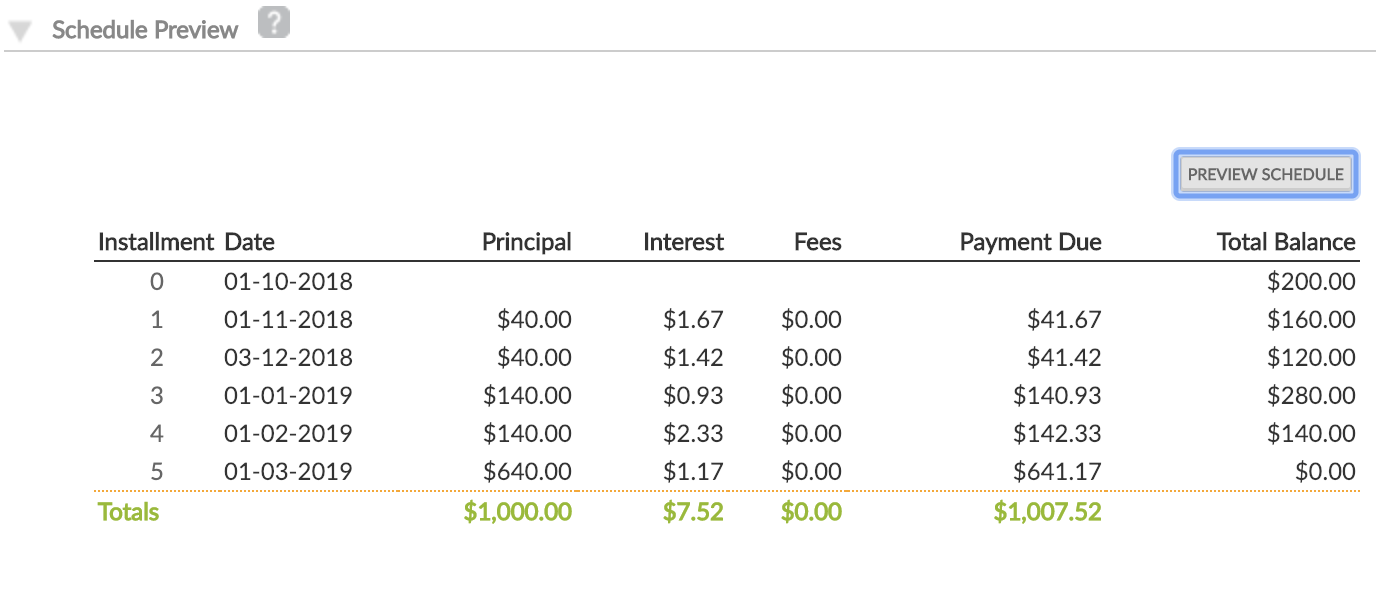
The resulting loan account will have the information about pending tranches displayed in the Overview section and will be activated when the first tranche is disbursed by selecting the Disbursement button on the right-hand side of the account's overview page.
In the Schedule tab at the loan account level, the principal and interest that are due will be displayed based on the tranches that were already disbursed, but you can always toggle the schedule view options under Preview Schedule With, to check what the schedule will look like after a future tranche will be disbursed.
You can add new tranches, delete existing tranches, and edit details - such as the amount or the disbursement date - in the same API v2 call. For more information, see Loan Account Tranches.
Schedule preview
In the Schedule Preview section, you can generate a preview of the expected repayment schedule by simply selecting Preview Schedule.
Association
Optionally, you can associate a loan account to a branch. In order to do that, you must have the Manage Loan Association permission.

The branch to which the loan account is assigned can be viewed in the loan account overview page under the General section as seen in the below image.
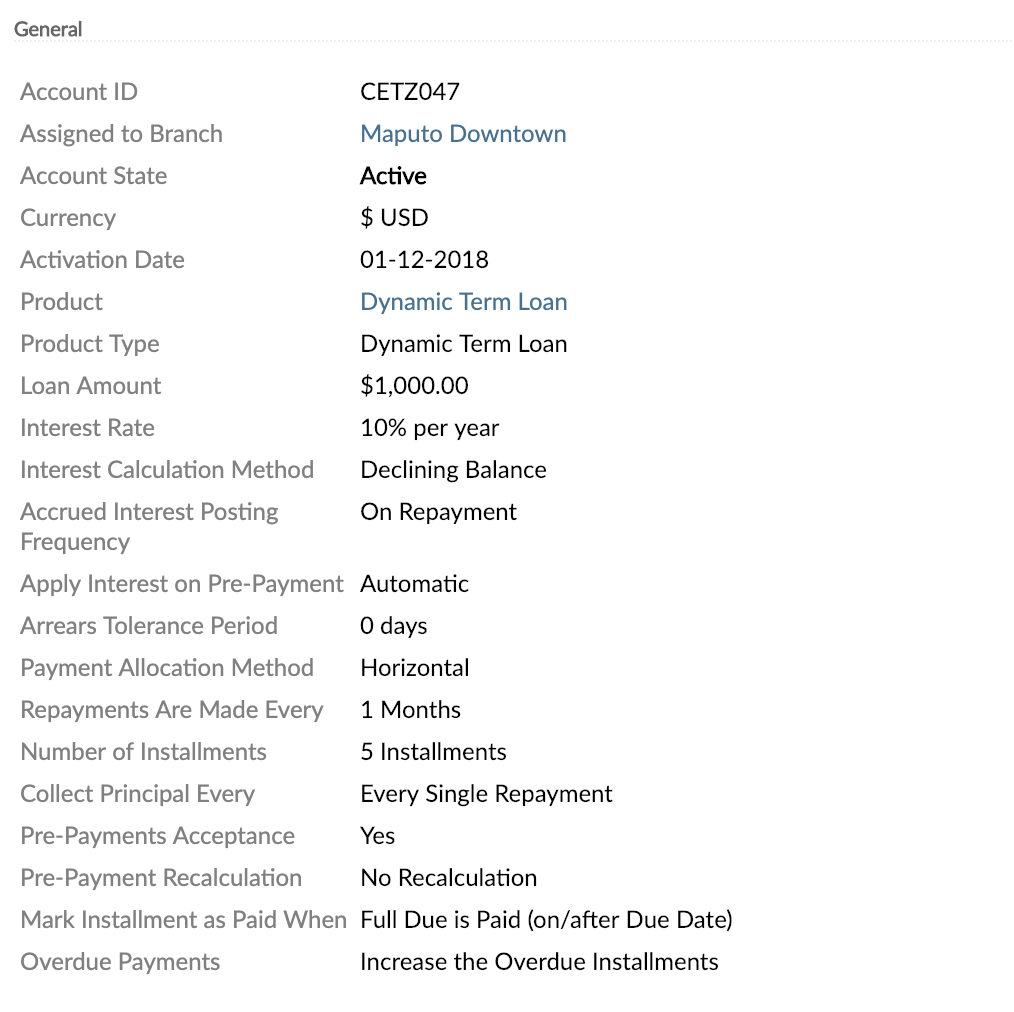
Solidarity group loans
If you're opening an account for a solidarity group, this means that its members may receive different amounts and that their accounts will be tracked individually. In this case, you need to specify the amount that each member will receive.
To do this enter the amount for each member. As you do this you can see that the amount that is still unallocated is updated at the bottom.
For more information about solidarity groups, see Loans for Groups.


